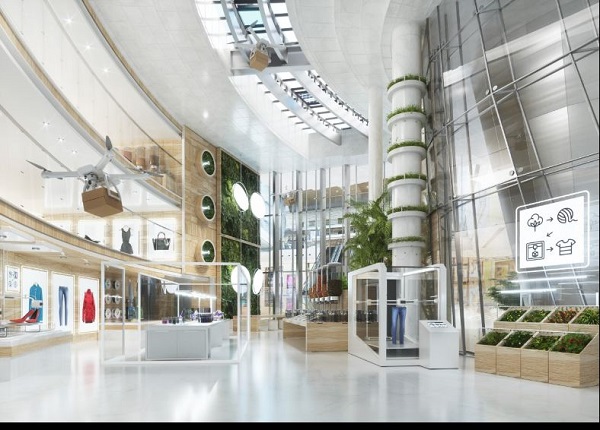Westfield Predicts 'Upside Down Retail' by the Year 2025
Future changes include self-sustaining stores and DNA tests for shoppers

A future self-sustaining store
A new report called Westfield How We Shop: The Next Decade predicts the coming of 'Upside Down Retail', with a drastic change in people's shopping habits as 'experiences' in stores and shopping malls take over from mere sales of products.
The report, produced by Westfield's owners Unibail-Rodamco-Westfield, or URW, looks at the needs and wants of 15,700 consumers across ten countries in Europe including the UK, France Spain, Germany, Austria, Sweden, Poland, the Czech Republic, Italy and the Netherlands and predicts the five major trends to shape the industry over the next ten years.
The biggest trend was upside down retail, with 59% of consumers interviewed for the survey expecting the tipping point, with more than half of retail space devoted to experience rather than product sales, to be reached by 25%. An even larger majority, 75% thought it would happen by 2027.
The custoers who took part in the survery were happy about this trend - over four out of five said they would be willing to pay more for experiences which were creative, health and games orientated, including studios where you can create your own podcasts to video games, workspaces and educational opportunities within stores.
The other four major trends were:
• ANTI-PRESCRIPTION. The research found shoppers are frustrated by inaccurate product recommendations whilst shopping online and four out of five said they enjoyed the overall vibe of shopping in physical retail environments. URW predicts smart 'digital and bricks' brands that use their online space to showcase the full range and their physical stores to surprise and delight could become tomorrow’s star performers. Consumers are requesting more of their loved online brands to enter bricks & mortar, with the likes of streaming services Netflix, Spotify and Tinder all proving popular.
• SELF-SUSTAINING STORES. As consumers become even more conscious of their ecological impact on the planet, an impressive 71% of shoppers wanted brands to make products in-store whilst they wait or create them in-store beforehand to minimise waste, Most also wanted to ban single-use plastics.
The report predicts the store of the future will extend this self-sufficient approach and will include allotments on the roof to grow ingredients, a 4D-printing factory and studio allowing design teams to create product on demand. In addition, shoppers will be assured of zero-waste packaging solutions that will happen in-store and will even be able to pay for goods through points programmes where customers are rewarded for their positive eco-friendly practices.
• RETAIL SURGERY. Retailers will start to act like doctors, prescribing specific, personalised and accurate solutions that will enhance shoppers’ day-to-day lives. The research found a surprising one third would be happy to hand over their DNA in order to receive products better suited to them.
• LOCALLY-MORPHED. The report predicts retail spaces of tomorrow will become community hubs with 70% of consumers wanting them to reflect the people who live in the area. and over a half saying they would prefer local brands to well-known ones.There are also signs of rising nostalgia as consumers desire experiences such as book clubs, social clubs and community fairs, harking back to former times.
Myf Ryan, Chief Marketing Officer Europe and Group Director of Brand and Strategic Marketing, Unibail-Rodamco-Westfield said; " The important role of the physical store is changing and retailers need to enter another decade of reinvention to remain relevant. Retailers that lead on sustainability, devote more space to experience, provide free-range browsing online and in store, deliver precise product recommendations based on science and think local will reap the benefits."
You can read the full report Westfield How We Shop: The Next Decade here.

The five major trends for retail over the next ten years
January 27, 2020